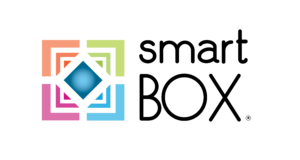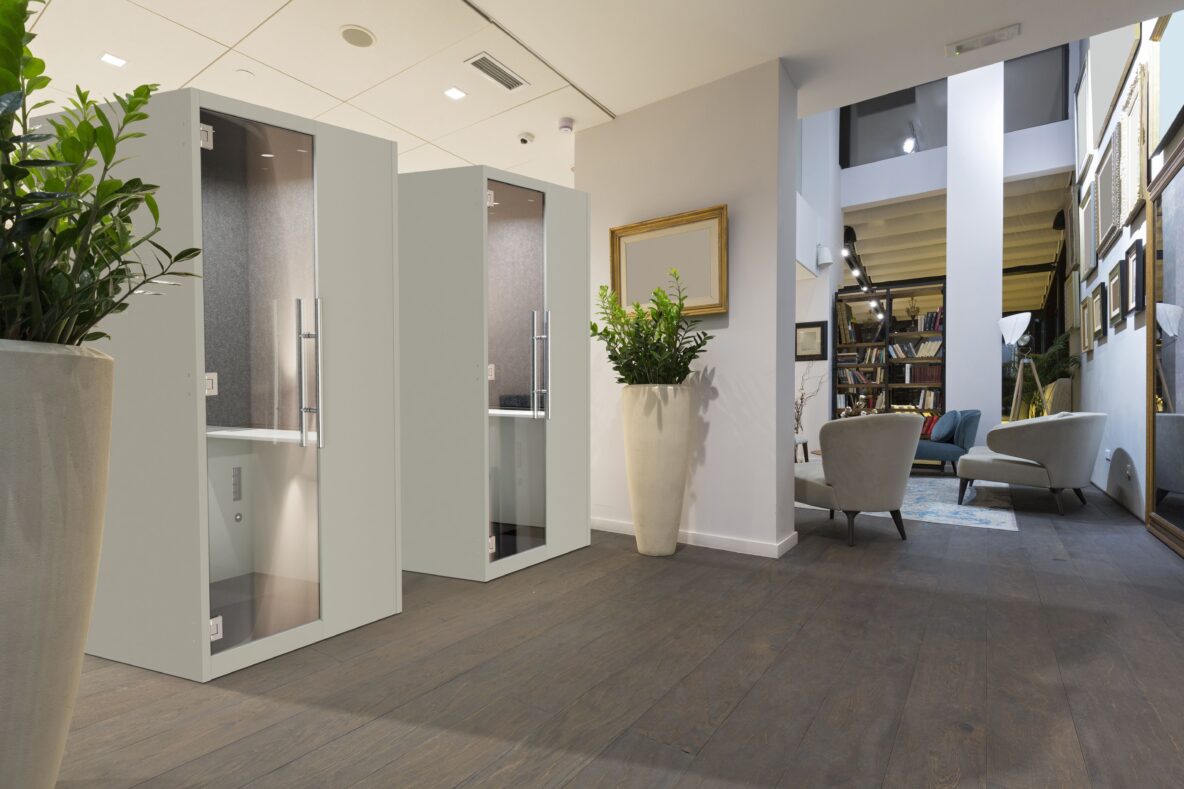Many thanks to Melissa Marsh & Elizabeth Hyde of PLASTARC for their article published in WORKDESIGN MAGAZINE “How to Design for The Variable Future: A Guide to Designing With Pods”.
Where smart got its start?
We created smartBOX as a well-designed, movable, and affordable solution to the need for quiet, flexible workspaces. Constructed using the highest quality sustainable and recycled materials and completely customizable.
To fit into any workplace, smartBOX manufactures fully equipped quiet pods and workspaces at surprisingly affordable prices. All smartBOX workspaces are manufactured to the highest quality standards in our modern Arizona factory and are supported by our lifetime warranty.
The world has changed!
How to design for the variable future?
DENSITY
Spend less on spaces, more on experiences.
Traditional offices have long followed a model in which 80-100% of employees have an assigned desk or work point, yet these are generally occupied less than 70% of the time. Alternative options are labeled “away seats.” Pre-pandemic, best practice dictated that these two categories exist in a 1:1 ratio. However, the future of work now calls for a more drastic shift: For every assigned desk, there ought to be 2-3 away seats. Of the latter, no more than 20% should be “owned” in an open plan workplace, and at least half should be in an enclosed room to provide retreat from distractions in common spaces. Literal visibility into the range of available workstations—no matter where an employee is based in a particular moment— is critical. This ensures ongoing awareness of choice and a sense of autonomy at the individual level while demonstrating organizational support for a wide spectrum of workstyles.
DIVERSITY
Spaces for every activity.
Introducing different space typologies in the workplace is an overlooked avenue for fostering inclusivity. Features such as overall capacity, degree of partitioning, built-in amenities, acoustic insulation, and surface heights all impact user experience and consequently signal who is and isn’t being accommodated. In seeking to outfit a universally inviting office, the incorporation of mobile phone booths offers a promising path forward. These free-standing units are inherently adjustable and versatile: They are easily moved in response to evolving utilization and circulation patterns, can be clustered together across sizes and orientations to delineate distinct zones, and contribute structure to square footage that may otherwise be under-optimized.
Beyond making work ‘work’
Designing for the senses
DESIRABILITY
Designing spaces that people love.
Every time you enter a space, a rush of information about it is delivered to your brain through your senses. What does it look like? What sounds are coming from it? What does it smell like? Is it hot or chilly, humid or dry? We humans are full-body sensors, and our feelers are out at every waking moment, helping us to understand the places we go. These same inputs also influence our mood, our behavior, and ultimately our well-being in any given space.
The good news is that every facet of the workplace can be fashioned to create experiences that explicitly appeal to the five human senses of sight, sound, smell, taste, and touch. There’s even a term for this—multisensory design. Its principles acknowledge that people experience and react to space in many ways, subtle and obvious, consciously, and unconsciously.
In fact, many of us spend so much time at work that factors like the volume and quality of sound we hear, whether we run too warm or too cold, and even how easily we navigate our way through the building can have a substantial long-term effect on both our mental and physical health. This, in turn, shapes how happy and productive we are in our jobs.
Recent research suggests that spaces that have multisensory elements are more frequently occupied than those without them. The diagram below illustrates the range of inputs that our five senses perceive, and some of the many multisensory options designers and occupants can consider employing to engender wellness in the workplace.
DESIGN FOR CHOICE
For everyone work seat, there should be 2-3 away seats to support alternative tasks.
Solo versus collaborative. These are the two overarching work modes that take place within the knowledge industry. On a given day, they occur in an approximate 50:50 ratio—with employees spending about half of their time on individual tasks and the other half on those involving others. Data collected from a combination of observational studies and survey results reveals a more granular pattern: When it comes to collaboration, about 70% happens in-person and 30% virtually. Within that breakdown, the most popular pairing is that of two workers (40%, on average), with an even split between meetings of 3-4 (30%) and those that gather 5 or more (30%). These figures have important implications for devising people-centric organizational systems and can serve as the building blocks for occupancy planning.
DESIGN FOR CONTROL
Work seats should have visibility into a range of away seat types
The year 2020 put each of us in the position of being able to design spaces for our own enjoyment. In the wake of COVID-19, we became accustomed to continuously exerting influence over our immediate surroundings. At home, even with dogs barking and kids shouting, we’ve still exercised a relatively large amount of control over our environments and routines.
For this reason, returning to our previous office spaces as-is may prove unacceptable—people expect an experience that is better, more empowering, and more vital than before. Listening to what individuals want and giving them greater say over how they work is going to make them much happier.
A simple design rule of thumb for empowering choice and control is to ensure that any given work point has direct visibility into at least three different space types so that occupants can find alternatives when their primary work point gets too loud.
For more information on the smartBOX group of work pods please click here.
To read the complete original article please click here.

